The Pacific Coast Bicycle route spans from Vancouver in Canada to the Mexican Border, covering a total of 1,848 miles. If you are thinking of cycling the Pacific Coast bicycle route, you can expect endless coastline – from rugged rocky Oregon to clear blue LA beaches – ancient forests and a lot of fun sights to see along the way. I wanted to put this guide together with all my advice and top tips, having completed this trail.
So I did this route a little differently! Each year, I try to take on a new adventure, and the Pacific Coast Bike Trail offered me my biggest challenge yet. As I was doing the challenge for charity and wanted to really test myself, I opted to travel on a kick-scooter rather than a bike – my husband joined me for the adventure! We started in Vancouver, Canada, ending our journey by crossing the border into Tijuana, Mexico.
Kick-scooters function pretty similarly to a bike – 2 wheels and panniers – but are just a little slower. Logistics and experience were pretty similar.
If you need any convincing to take on this bike tour, just check out this short video, which shows some of the views we were rewarded in the first section of the trip.
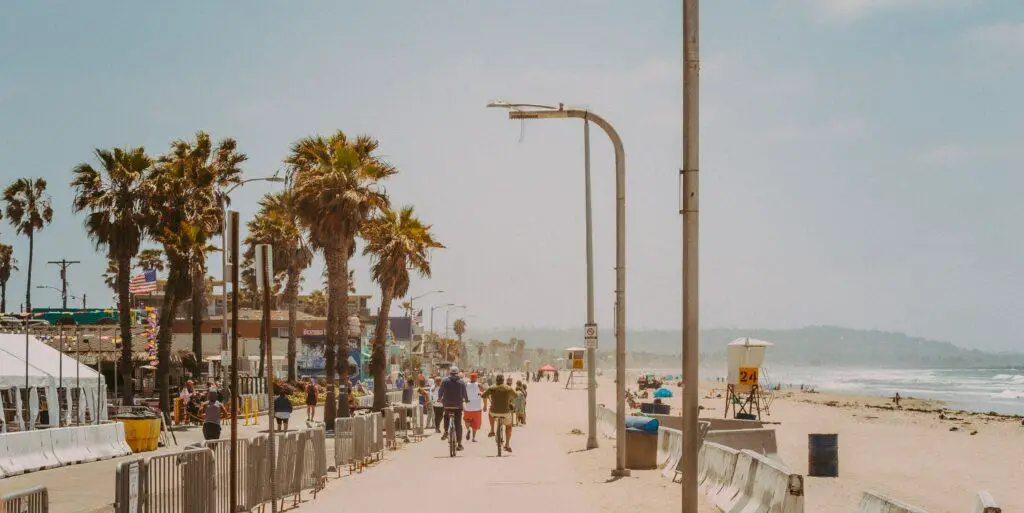
Before we start…
I wanted to start with an introduction to give this guide some context. I’m Bex Band – a full-time UK adventurer, author and founder of the women’s adventure community Love Her Wild. You can sign up to my newsletter here. Also check out my recently published book Three Stripes South, all about my first big adventure hiking the length of Israel.
If you have any questions, please use the comments box below. And for ongoing tips and inspiration on camping and adventure, make sure you follow me on Facebook and Instagram.
How long does it take to cycle the Pacific Coast Bicycle Route?
The route was put together by the Adventure Cyclist Association and is a total of 1,848miles passing through 3 US States.
Most cyclists take between 4-10 weeks to complete the entire section. The Association told me 6 weeks is considered an average time frame.
Of course, this is very dependent on a lot of factors, including your fitness level and experience. And how many days you want to take off to enjoy the places you pass en route? As a general rule when doing long-distance treks or bike rides, aim for at least 1 day off after every 6 days on the road. In addition, add a few days for contingency and in case of an injury.
We travelled distances of 50-85km a day, although, of course, experienced cyclists can do further. It took us a total of 80 days to do the entire route, including rest days. In the big cities, we’d try to take 2 days to see the place and then as a general rule would take a day off every 5 or 6 days.
We could have travelled faster but there are so many cool places en route to visit and sights to see that we wanted to balance out the challenge with also having a trip of our lifetime!
What’s the Best time to cycle the Pacific Coast?
We left Vancouver, heading southbound on the 17th May. Oregon had some cold and rainy days. But by the time we reached California in July it was very hot!!
Cyclists take on the Pacific Coast Bicycle Route all year round. As the saying goes, ‘there’s no such thing as bad weather, just bad gear’. Most consider the best time to cycle the Pacific Coast to be spring when the temperatures are mild but this also means you don’t hit the heat of the summer when it would become unbearable.
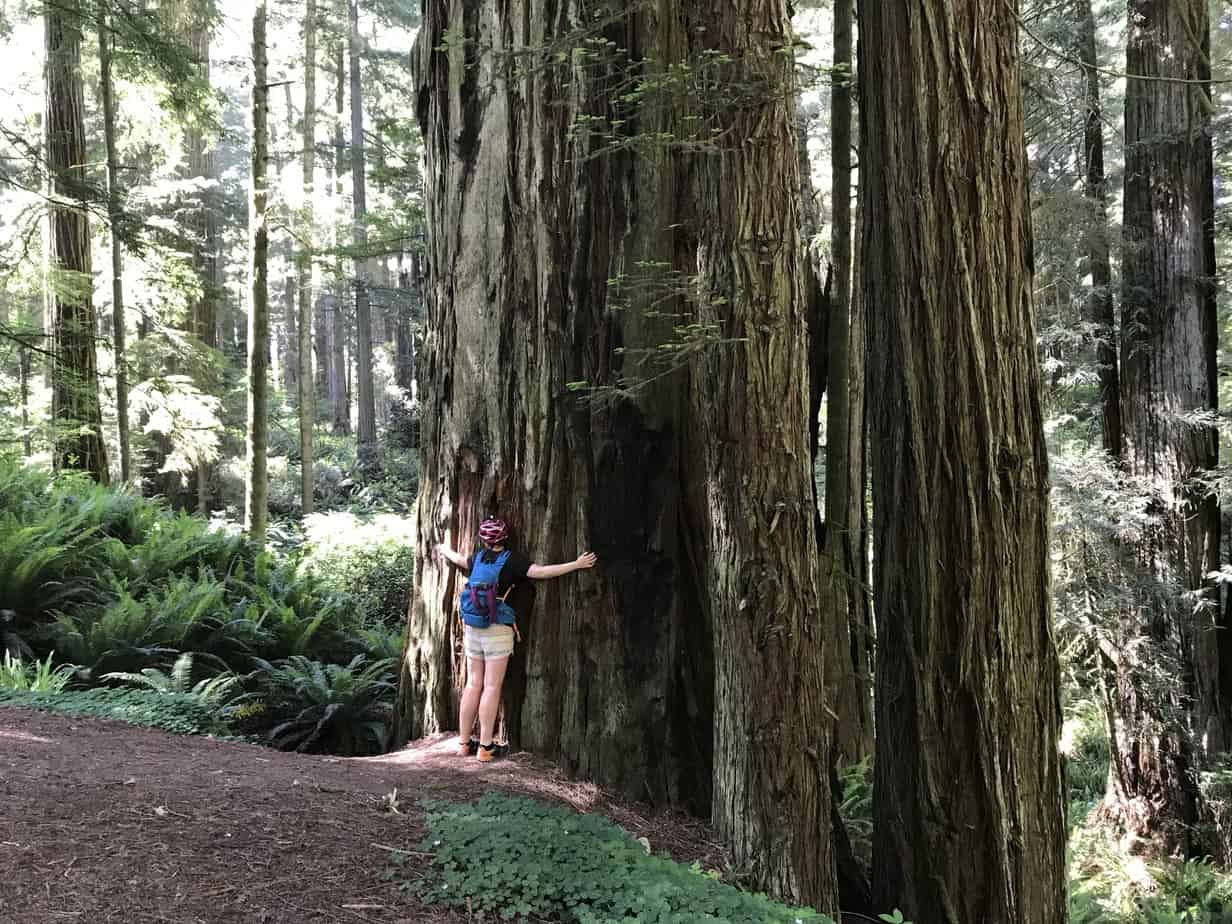
The Pacific Coast Cycling Route
The Adventure Cyclist Association have Pacific Coast Bicycle Route maps that you can buy. They come in 3 parts, and you can buy the maps online here: Part #1 – Part #2 – Part #3. They cost around $15 each.
Alternatively, you can do what we did and download the map from the official website and load it onto a mapping app onto your phone. This might keep weight down a bit but it does mean having to ensure your phone doesn’t run out of battery. We used an Anker Battery pack, which worked great and would just need re-charging when we were in cafes or overnight in motels (when moving, we would keep the battery pack in the outside pocket of the pannier with a cable running to the phone, which was attached using a Grefey Mount attached to the handlebars).
You could also use a guide – I think the best one is Bicycling the Pacific Coast. It has all the maps you need as well as information on the areas and places to eat and stay. It’ll make your travels very easy but you might feel like it takes out some of the ‘adventure’ of working things out for yourself.
For the most part, you are cycling on highways although some stretches are through towns and on bicycle paths.
We decided not to follow the route entirely though (I write more about this and our reasons below).
When we made a change in the route, following our own path, we simply used Google Maps. Their bike feature when you plot a route works really well. Sure, sometimes you end up on a path that isn’t suitable but this really did just add to the adventure.
Of course, you don’t have to do the full route. Many cyclists, especially those who are restricted with time, just do a segment. The most popular segment is the San Fransisco to Los Angeles part.
What to pack for cycling the Pacific Coast?
Between us, we had just 27 litres, so we were packing very light. Just one 17L pannier on the handlebars and a 10L hydration rucksack on the back. We decided not to take a camping stove and never carried more than 2 days worth of food, utilising roadside cafes and restaurants. This worked out more expensive but meant we saved a lot on weight.
It’s really easy to pick up supplies on the way if your clothes get worn or you need to replace a tyre (between us we only had a total 8 punctures). We saw cyclists burdened with bags and panniers, struggling to get up hills in the heat. I really couldn’t understand what they had in their packs. You waste so much time packing and unpacking all the time when you travel heavy.
You can see the full kit list of items we took here.
Where do you stay each night on the trail?
We worked out accommodation as we went, usually planning about a week or 2 in advance. You definitely don’t need to plan so much but if you intend to use hosts then giving a bit of notice makes it much easier to find people.
We were opting for variety. We love camping and being in nature. But also love being hosted and the people you meet. Plus occasionally a room to ourselves to give the back and brain a proper break.
The Pacific Coast bicycle route camping options are pretty good although if you want to do this predominantly you need to accept there will be a lot of detours and extra miles to get to the campsites. About half the time we used campsites. The other half, we stayed with Warm Showers hosts (using the phone app to find and contact them – the success rate isn’t always great. I’d say we contacted 2/3 people to get 1 ‘yes’. That’s why doing it in advance is good as it can take a bit of time).
About every 10 days or so we would book in somewhere for a break. We found the Motels really expensive (usually $80-100 for 2 in a double) so we mostly used Airbnb which was brilliant – (click here for $34 off your first booking).
If we got really stuck we also sometimes knocked on doors and asked strangers if we could camp in their yard. This had about a 50% success rate! I think in total we stayed in 4 people’s yards – they were all really lovely and brought us food as well. Or we’d post on local Facebook groups to ask if someone would mind us camping in their yard. Every time we did this, someone would come forward with a spare bed.
If you are a foreigner, to make immigration smoother, it is worth having a few places booked en route as they like to see proof that you have at least some plan and somewhere to stay. Or at the very least book somewhere for the end of your cycling tour.
Top tip: if you get cold camping, check out these top tips for staying warm!
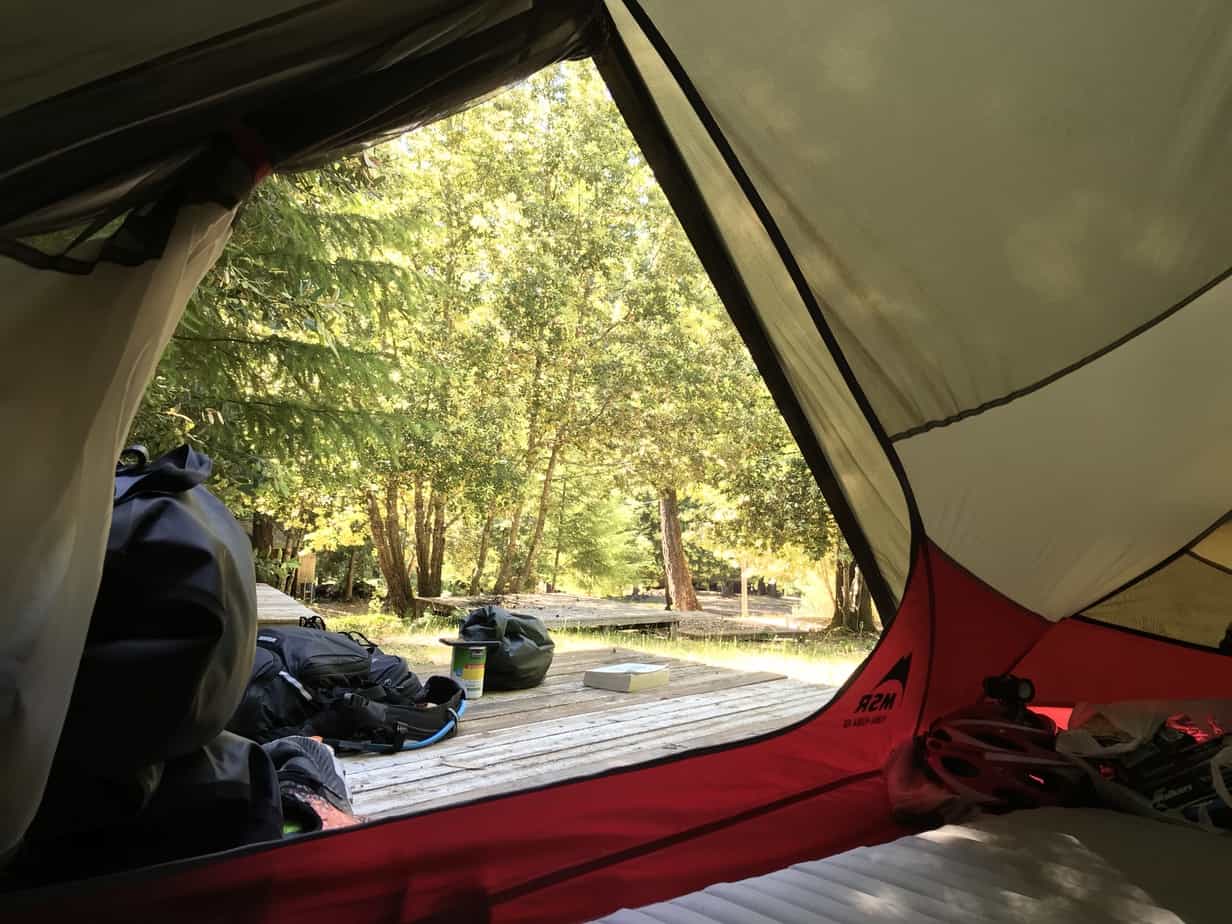
How much does it cost to do the Pacific Coast Bicycle Route?
On the road, we spent an average of $50 per day for 2 people, or $25 each. This included food, drinks, accommodation costs and also entry to attractions.
This doesn’t include gear (we had almost everything already), flights ($900 each return from UK to Vancouver. We also got the train back from San Diego to Vancouver, which cost around $150 each) – more on that in my tips below – or insurance ($150 each). And we had some fun post-adventure for a couple of weeks before our visa ran out, visiting Disneyland and Vancouver Island, which I’ve left off.
Most of this was on food which could definitely be done cheaper if you bring a stove and prepare your own meals rather than eating out. We’d been saving up credit card points before this trip which meant we got a few nights free in hotels along the way. Plus used this code to get a discount on Airbnb.
We saved a huge amount on accommodation because we were hosted so much by Warm Showers hosts and people on Facebook who would also often feed us. Because we were doing an unusual trip (on scooters) and for charity, we probably experienced more generosity than most would.
Daily spend ($25 a day over 80 days) – $2000
London to Vancouver return Flights – $900
Return train from San Diego to Vancouver – $150
Insurance – $150
TOTAL – $3,200 (excludes gear which we already had and spending a week splashing out on holiday post-adventure)
Travel Insurance for Cycling the Pacific Coast
You will want to make sure you have decent travel insurance that covers you for such an adventurous activity…. especially one that goes on for a prolonged length of time.
World Nomads Travel Insurance
It’s important that you have travel insurance for your travels. World Nomads are a travel insurer that I’ve used multiple times before for my adventures. World Nomads covers more than 150 adventure sports and activities and worldwide coverage.
I’m part of World Nomads’ affiliate program (which means I get a small recommenders fee if you choose to use them, at no extra cost to you). Get a quote here.
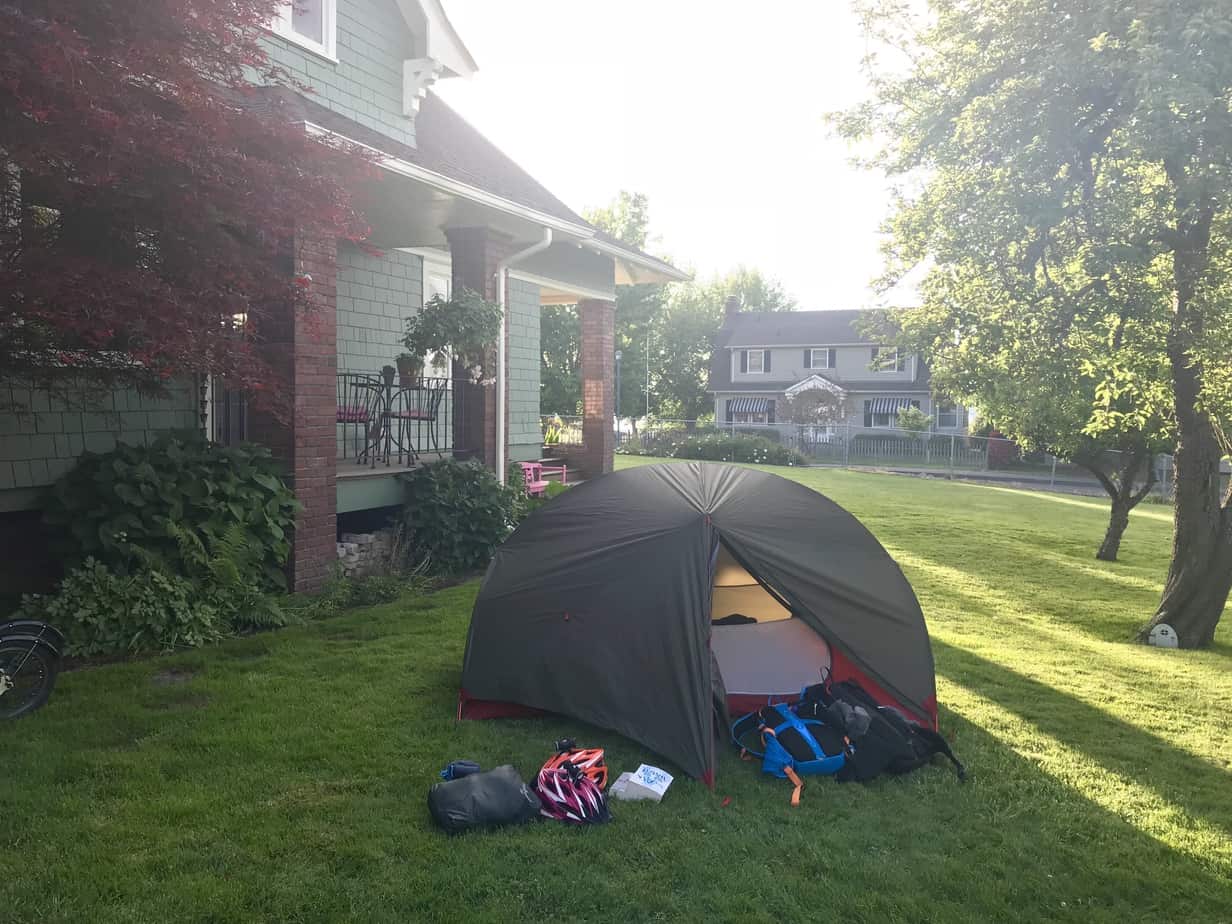
How fit do you need to be to cycle from Canada to Mexico?
This is always a tough one to answer! You will need a good baseline fitness, but more important than that, you will need to be confident on a bike carrying your panniers with all their weight. You’ll spend a lot of time on busy roads, so you need to know how to navigate them and to stay steady so you are safe.
In terms of fitness, do some training before, building up your distances while carrying your bags. I personally like to get fit on the adventure which means starting out slow and allowing for plenty of rest days (at least 1 a week and a long weekend every month or so while on the road).
My 8 Top Tips for cycling the pacific coast
There’s very little I would change about the journey I took but I wanted to share some tips that I wish I’d known in advance.
#1 Changing the route is fine
We made a decision to miss part of the Oregon coastline because we really wanted to see Portland. It meant that rather than heading straight to the coast following Seattle, we stayed inland, turning West only after Corvallis (which turned out to be one of our favourite towns on the whole trip).
Everyone kept telling us we’d made a mistake because the Oregon coastline was so spectacular. But we still got to see a good chunk of it, plus we got to see some more unusual rarely visited towns and travelled through gorgeous quiet forests (on the 154) which was one of the highlights of the trip.
We had to change the route again because of a mudslide in Big Sur, which forced us inland for a section. Sure we missed out on some coastline….but this route has a LOT of coastline and good views. There are also nice experiences to be had inland a few miles where cycle tourers don’t usually go, and the roads are quieter. I wouldn’t change a thing with the route we did and wouldn’t worry about listening to all the things people tell you-you’ll be missing…..everyone just wants to give you advice!
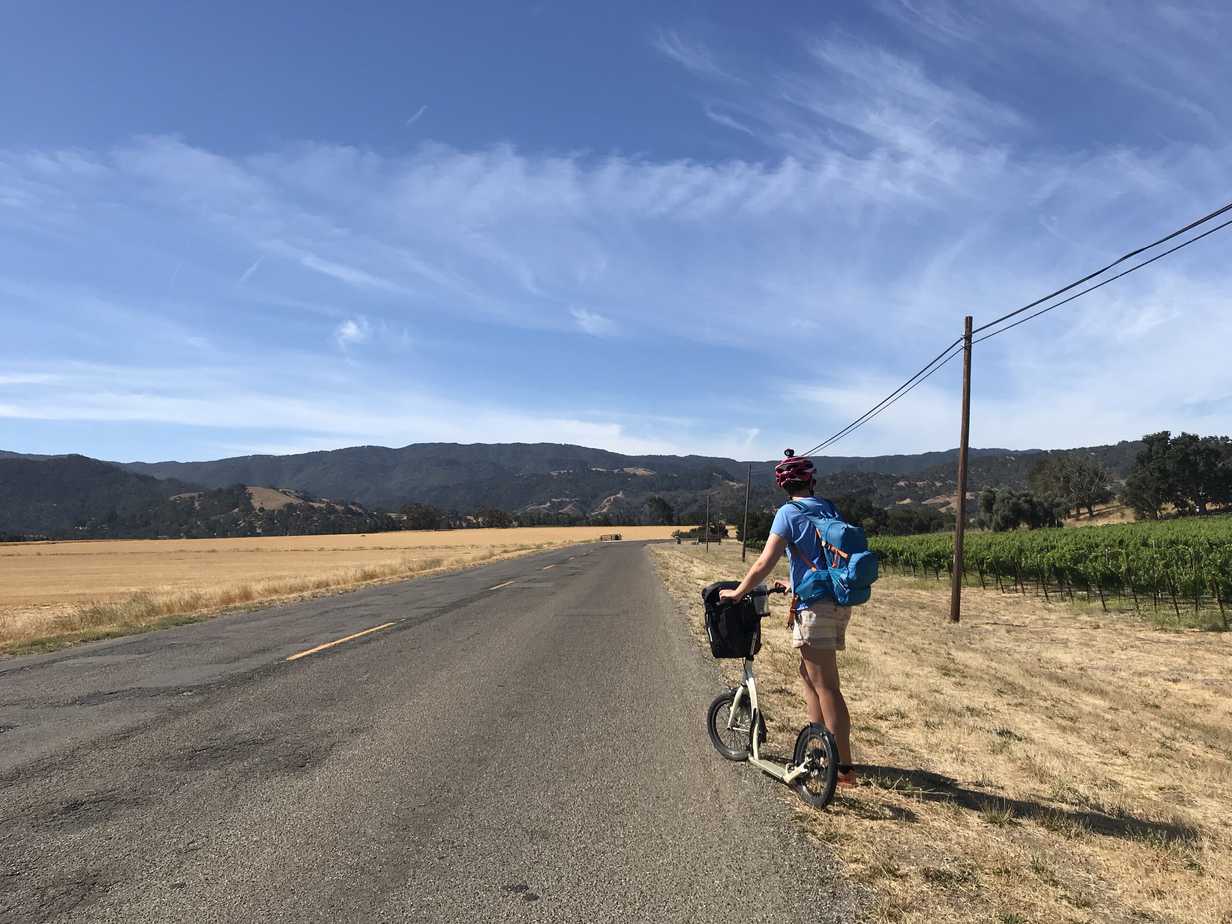
#2 Make the most of your days off
You pass some really fantastic places on the Pacific Bicycle Route and it’s a shame not to stop and take them in. All the cities had fun things on offer and I appreciated the touring more after a day away from it sightseeing or in a theme park.
#3 The hiker/biker rule (and watching your stuff)
State parks have to let you camp if you arrive on foot or bike – even if they’re full! Usually, the hiker/biker rate to camp is between $5-10 per person which makes it a great value. We also found a lot of RV parks willing to take us even if they didn’t advertise camping….just give them a call in advance if you aren’t sure.
Theft is a real problem in campsites. A woman a couple of weeks ahead of us had everything stolen, including her locked bike and pitched tent, when she went for a swim in the sea. Keep your stuff with you and locked and don’t pitch your tent unless you are planning to stay with it (or if there are friendly neighbours you trust to guard it).
#4 Warm showers = AMAZING!!
I was reluctant to use Warm Showers at first, but it was amazing. We met the most wonderful people through this community, and it really made our journey more comfortable. It helps with Warm Showers to organise a week or 2 in advance so people can plan on you staying over. We also noted that sometimes there appeared to be hosts on the website who didn’t show on the app…so it’s worth checking both options if you are stuck for accommodation in an area.
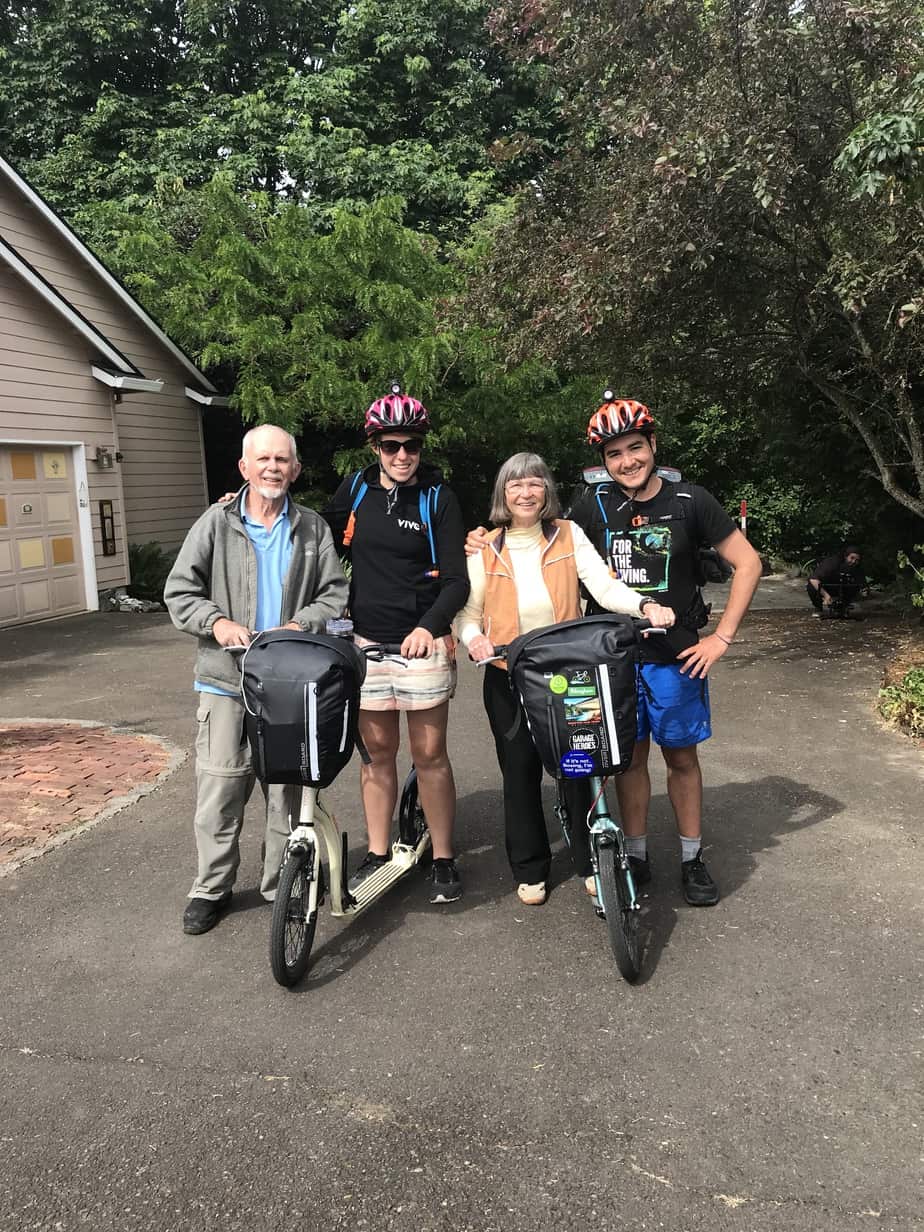
#5 Know what to be cautious about
You don’t need to worry about bears. We actually did have a close encounter with one but he was more spooked by us than us of him. Racoons are more of a pest in campsites, so make sure you keep all your food with you in the tent, hanging from a tree or in a bear box if it is provided.
Compared to Europe we found the drivers generally not great….they are clearly not used to driving with cyclists. We had lots of people overtaking really close rather than waiting for a clear space to pass. Even when we were taking the centre of the road (if there was no hard shoulder) we’d still get cars trying to squeeze by. Keep visible….we had flashing lights on all the time we were on the road (we use these Topside helmet lights which were great!).
The worst though was we found some drivers really aggressive and angry towards cyclists. They would honk their horn or wind down their window and yell at you as they drive by fast in the hope of scaring you. After this happened to us a couple of times, I asked other cyclists, and all of them reported similar incidents. It didn’t happen often but every time it made me jump and wasn’t very pleasant. It’s just worth being aware of.
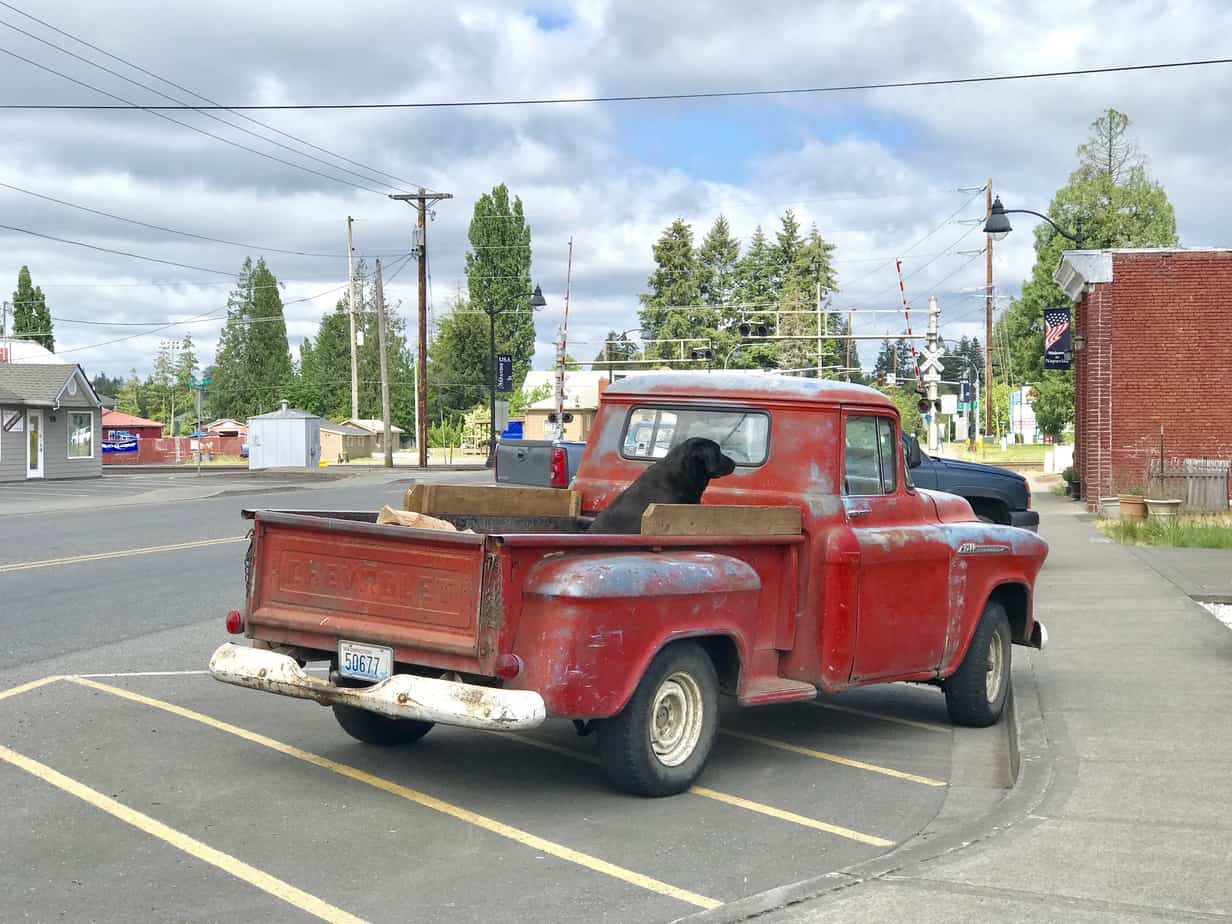
#6 Don’t miss out on Tijuana
Loads of people told us not to go into Tijuana when we reached the border. We found the crossing really easy (we had to wait about 40 mins to get back into the US, which was the most annoying part), and the town was a little rough but definitely worth visiting for a celebratory taco and tequila shot!
#7 Take a reusable cup, straw and spoon
You can’t ignore the plastic pollution in the States. The roadside is littered with McDonald’s and Starbucks cups, straws and plastic spoons. So rather than contributing to the problem, bring a reusable set with you to do your bit for the planet. A lot of the drinks have free refills, so you can then even take a cup full away with you to have on the road.
#8 Get the Amtrak back
It was cheaper to get a return international flight from the same location, London – Vancouver. At the end of our tour, rather than getting an internal flight from San Diego to Vancouver, we decided to be more adventurous (and environmentally friendly) and to get The Amtrack Coast Starlight (you can read my experience of this journey here).
It was BRILLIANT!!!
The journey took a day and a half, but I loved every second. The views were great and the reclining seats really comfortable (even in economy). They have a viewing deck and we even spotted some of the places we’d travelled past on the Pacific Coast Bicycle Route past. It was a great way to end the trip and to reflect on all the miles we’d travelled as they whizzed past us on the train.
Find out more about cycling the Pacific Coast Bike Trail
Before any adventure, I read blogs and buy books to totally immerse myself in the planning and preparation phase. It’s the best way to get organised and to have a sense of what you are heading into. This guide has been very specific to my personal experience, so I put together the following list of books and articles from others who have also completed the Pacific Coast bike route.
Blogs:
- Dave Blog: Biking the Pacific Coast Highway – includes links to a section by section journal, which is nice to read
- AJ Johnson Blog: 44-day cycling journal of cycling the Pacific Coast – has some handy visual stats of each cycle day
- Kate Bradshaw Blog: How to bike the Pacific Coast from Canada to Mexico
- Averi Blog – (mis)adventures of cycling the Pacific Coast Highway – worth a read as Averi offers a good alternative route. Check out the rest of her site as well for more cycle touring inspiration!
Guide books:
- *MOST RECOMENDED* Bicycling the Pacific Coast
- Cycling the Pacific Coast: The Complete Guide from Canada to Mexico
For inspiration and to build excitement for your adventure, check out these great adventure memoirs:
- One Man and His Bike
- The Man Who Cycled the World
- And my book Three Stripes South (which is about my first big adventure hiking the length of Israel!)
Don’t forget to also order your official Adventure Cycling Association maps for the route (there’s nothing quite like using a simple map to guide your adventure). There are 3 parts, 1 for each state:
If you have any more questions about cycling the Pacific Bike Route I’d be more than happy to help! Just ask in the comments box below. It’s worth reading the other comments as well, in case someone else has been thinking the same.
It takes me a long time to write my free adventure guides like this one. If you’d like to say thanks, you can buy me a coffee. I use any donations to pay for the upkeep of this website.
You can stay updated with my adventures and advice on Facebook and Instagram. Or you can subscribe to my YouTube channel. I give all my advice for free on my website. If you want to say thanks, you can buy me a coffee!
Good luck with your cycle adventure……I’d love to hear in the comments how you get on 🙂

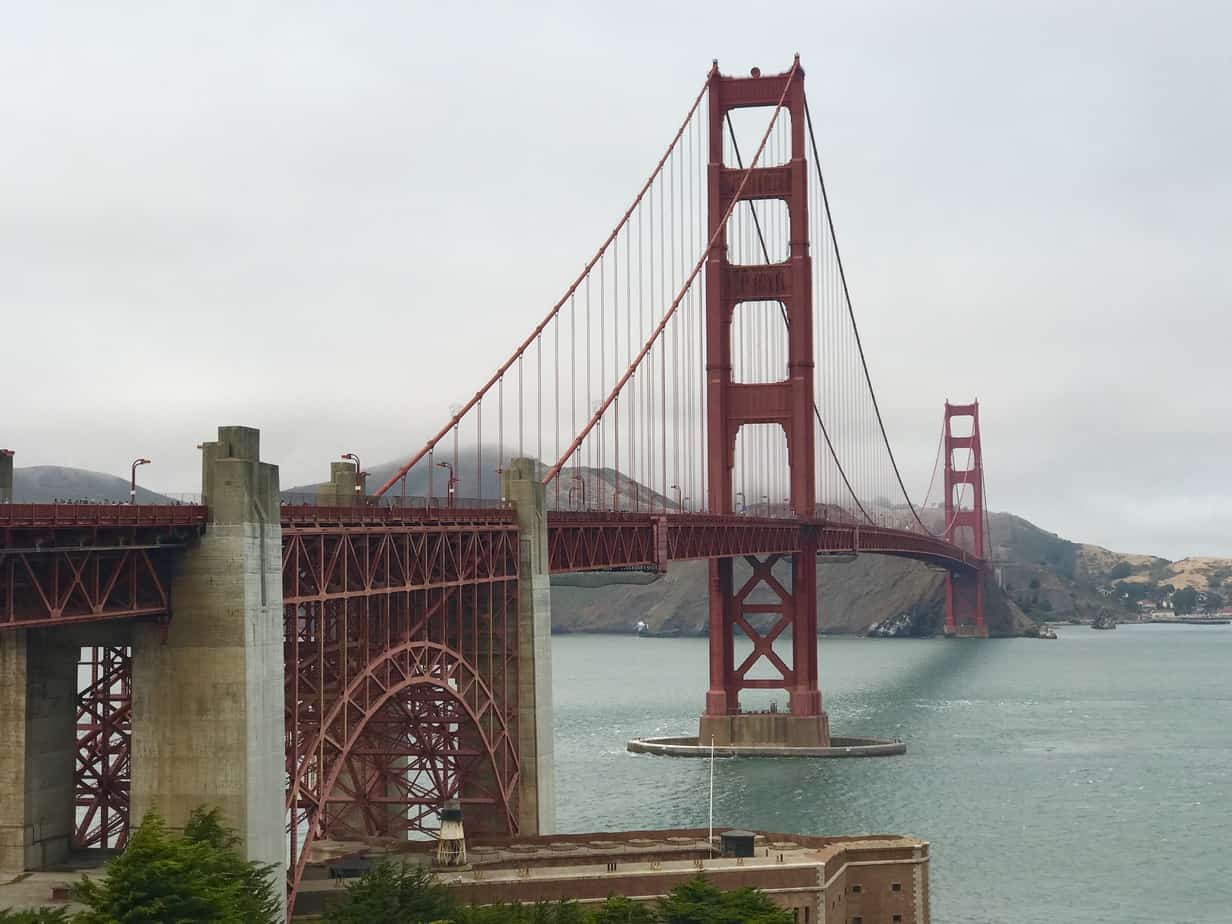
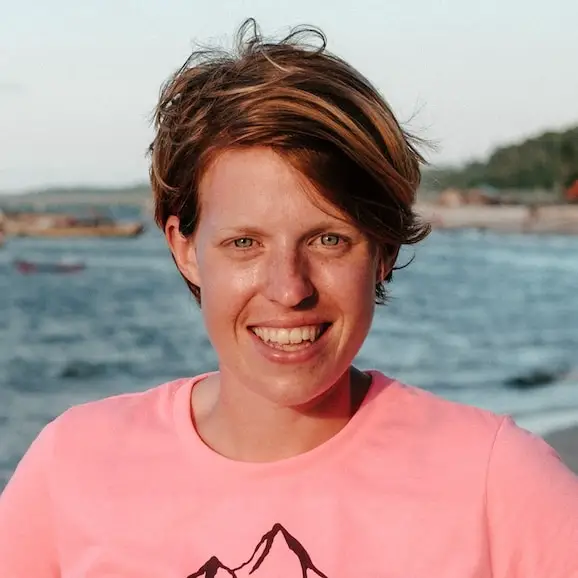

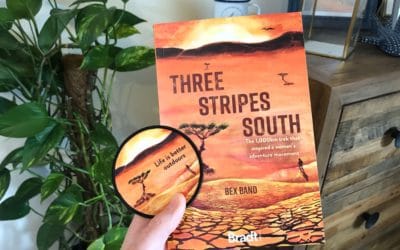
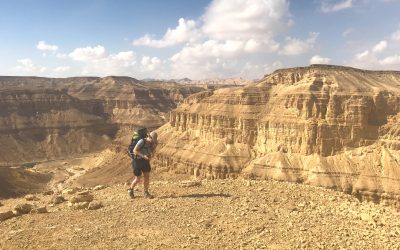
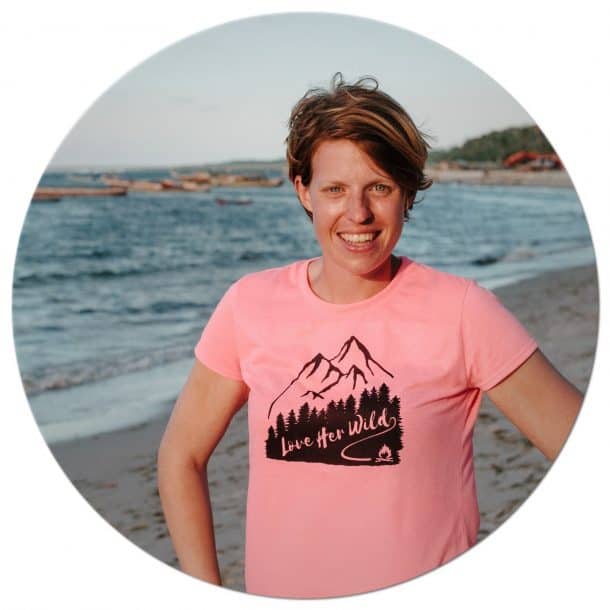
Hi – I’m really glad that I found this website! You sound amazing!
Cycling the Pacific Coast is something I really, really want to do. However, although I’m fit and a keen touring cyclist, I’m a 66-yr-old grandmother, and I don’t have anyone to cycle with. I’m on the waiting list for a van-supported ride. It’s not an option I prefer and there’s a strong possibility I won’t be able to get on the trip. But your account, plus the other reading I’ve done, raises concerns about personal safety and particularly theft. At least with a guided ride there’s safety in numbers.
I particularly want to do the ride this year rather than wait because with every year comes decreasing fitness. Adventure before dementia, etc., etc.
How mad do you think I’d be if I can’t do the tour and therefore plan to ride on my own? And please be honest.
And I’m very happy to donate cups of coffee!
You are too kind! Thank you Clare 🙂
I met at least 3 cyclists en route who were in their 60’s, although probably more. Honestly, I don’t think you need to worry about safety doing this alone, especially if you always use an official campsite en route. The only theft story I heard was from 2 cyclists who pitched their tent and then left their gear to go for a swim in the sea. When they’d returned their tent had been raided and some items were taken. We would always take our bags with us everywhere we went and if we did leave the tent to go for dinner then it was left empty. If you get a good D lock and cable for the bike then this shouldn’t be a worry either. I was sure our scooters were going to be stolen, especially as it was hard to lock them as effectively as a bike but they survived 3 months and a lot of attention.
The campsites always had the added security of having people around you so I always felt safe then. Warm Showers is also a great network that you can tap into to get a nights stay and you’ll meet some interesting a kind people through this.
I hope that helps a bit although let me know if you have any other specific concerns.
Thanks so much for replying quickly.
There was a section in your top tips, #3, that made me nervous [Theft is a real problem in campsites. A woman a couple of weeks ahead of us had everything stolen, including her locked bike and pitched tent, when she went for a swim in the sea. Keep your stuff with you and locked and don’t pitch your tent unless you are planning to stay with it (or if there are friendly neighbours you trust to guard it).].
I was robbed in Chile when I had my bag of valuable with me, and really don’t want to go through all that again.
But your reply is more encouraging.
There’s no one for me to do the whole route with, but I have the impression that it’s possible, even likely, that I’d meet people on the way to ride sections with. And that would be reassuring.
So, if I were your mother, would you support me/her setting off alone, if the tour thing doesn’t work out?
Clare
Yes – that’s the theft I was referring to. I remember it as 2 guys but it may have been a lady! I definitely remember that they left their stuff at the campsite to go for a swim so it was unattended. After hearing that we always kept our bags with us if we left. Or we made friends with the neighbours (once an RV neighbour let us store our bags in their RV when we went out for dinner).
We passed a lot of people who were cycling the West Coast and would have had options to join groups along the way but we were too slow. On a bike though this will be an option for you.
If my mum was talking about cycling the route I wouldn’t be worried about her in terms of personal safety or theft. Just being careful on the roads – being visible and having good lights. But I’d 100% encourage her to do it…it’s an incredible trip.
One thing you could do if you did want company is to join some Facebook groups for cyclists or adventure groups like the women’s one I run called Love Her Wild. People regularly post in these saying they are doing a challenge and looking for company with good success. You could suggest that someone joins you just for a week or 2 so you know you’re not alone for the entire stretch. Maybe even arrange for different ladies to join for different sections. Just a thought!
Bex 🙂
Fabulous! Thank you so much! I’m back to being fully positive – and also more aware of the need for vigilance. Those ideas for finding occasional companions are ones I’ll follow up, and I’ll sign up to Warm Showers too (there must be cyclists passing through London who’d like a bed for a night). More coffees coming your way, with much gratitude from me!
Thank you! Honestly, I’m happy to help. The route is for the most part pretty active with drivers and tourist spots so you won’t be far from others. Definitely sign up to Warm Showers….when you contact people mention your age and that you are female as this will work in your favour. I met some really wonderful and interesting people via Warm Showers. And also got to stay in some pretty spectacular houses!
So for posting in groups I’d really recommend posting in the following Facebook groups – Love Her Wild and also The Yes Tribe. I meet so many people who would love to do something like this but don’t have the confidence to go alone so think you’ll have no shortage of takers. I’d also suggest putting a post up in Explorers Connect ‘find a teammate’: https://www.explorersconnect.com/join-a-team
Good luck and let me know if you have any more questions 🙂 It’s an incredible jounrey!!
Clare,
Did you do the ride yet, what with the Covid pandemic? If so, I’d love to hear how your adventure went. If not, another source of possible riding partners is Adventure Cycling Association, the group that prints the maps Bex describes.
Hi Bex,
Thank you for taking the time to create the page and I have found it very interesting to get a first hand account of the journey, accommodation and driver attitudes to cyclists from a British perspective, plus links to other sites. All this will help with planning a trip in about 18 months’ time.
Good luck with your next adventure!
Thank you Magnus – it gives me a big boost when I hear my blog has been helpful with adventure planning. Good luck with the trip! You are no doubt going to have a great time!
Looking to do Half moon Bay to San Luis Obispo but most interested in Carmel to SLO and wondering how traffic and shoulder conditions are. I don’t love riding in dangerous situations but was looking for a challenge for my 60 th birthday. Plan is about 50 miles a day so Carmel to Lucia and then Lucia to Cambria and then onto SLO. Ive done Cambria to SL) so its probably the Big Sur area between Carmel and Lucia that Im most worried about.
I’m so glad I found your blog Bex! My girlfriend and I plan to do this trip on inline skates this summer. We’ve recently picked up a sponsor from the brand Rollerblade and plan to film the entire journey. We’re just starting to plan out our route with our main concerns being finding the roads that we can legally skate on and avoiding unpaved roads. I don’t know if you’d like to talk over the phone or just email but any advice from you would be greatly appreciated!
Oh wow – so cool!! I’d be very happy to help via email – just get in touch via the contact me page. I’m looking forward to hearing more 🙂
Hi Clare or anyone else out there thinking to cycle the Pacific Coast route from BC to San Fran at least. Looking for company. I live in Invermere, BC. I’ve cycle toured many countries and went across Canada 7 years ago at age 63. I’m 70 now and want to travel faster/lighter but not on my carbon road bike but a hybrid tourer with minimal baggage and perhaps stay in cheap motels quite often, especially rainy days. Depending on hills i go 80 to 110 kms/day [55-75 miles] and 7-10 days til an off day at especially interesting places. But flexible. Start in Victoria, BC on about May 26th, 2021, ferry to Port Angeles and then head west and then south down the Washington coast.
Hi Bill, I just read your note. may be we could exchange views about Pacific Coast Highway by bicycle.
My plan is to start near Portland/OR approx. in June. Until now I have not booked any flights or accommodation. 2016 I made the tour from San Francisco to Lost Angeles. This time I would do the northern part of the PCH from Astoria to SF. Like you I am in the 60th (66) but my daily biking to work kept me fit.
When do you plan to start your trip? May be we can share some km/mi?
Best regards!
Oops , i meant this year, 2022
Hello,
I am planning on cycling from Seattle to Los Angeles and looking for advice re what phone and sim I can use while over there (I’m imagining that I’ll be using data mostly).
When I’ve been in other countries I just pick up a sim at the airport and put it in my current phone. Last time I was in America I couldn’t find a sim that I could use in my UK phone.
Any advice would be much appreciated, thanks.
I’m with Three and they have free roaming in America so was able to use my phone (inc data) as normal.
Really enjoyed this post. I’m planning a Pacific coast ride and was even thinking of heading inland through Oregon to check out Portland. Great to hear that worked out for you.
Thanks Robin – we were really happy we did the detour inland.
I hope you have a great trip!
Hi, I enjoyed reading your account and I watched Edna’s adventures on U-tube where she recorded her ride. Looks fantastic. When you flew into Vancouver what did you do with your bike box, I will be flying from UK and a bike box will be used. The use of the Amtrak train gets around the issue of how do you get the bike box to the end – leave it at the start!
I will be 70 when I do my trip next year (2025) and planning on doing lots of these type of rides to keep me young.
What a great way to keep yourself young!
I ended up selling my wheels at the end of the trip and giving the money to the charity I was raising money for. You should easily be able to find somewhere to store the box for you at the start though….I’d suggest asking bike shops first or try joining local Facebook groups (groups for cyclists or outdoor enthusiasts) and put a post in there. No doubt someone will responding saying they’d be happy to store the box in their garage during your trip.
Would love to hear how you get on!